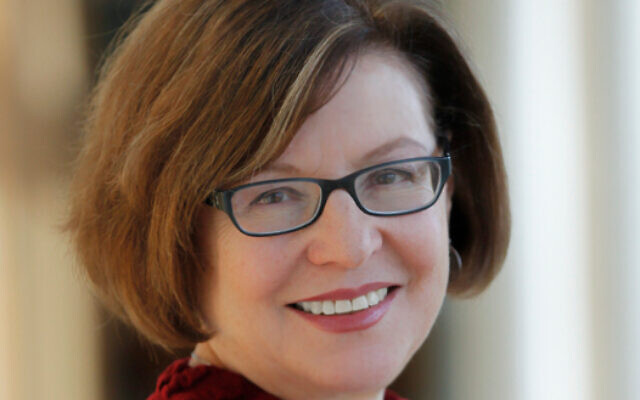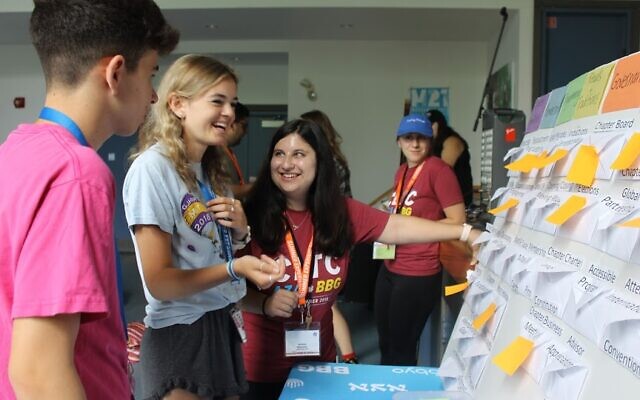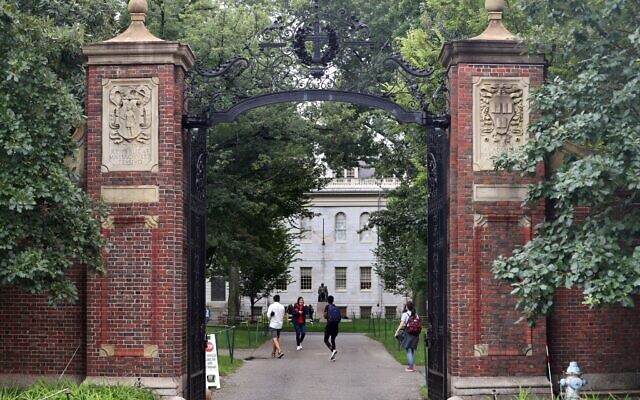Tulane University professor Ilana Horwitz’s research points to religious culture as reason for why Jewish girls surpass educational attainment of non-Jewish girls – and Jewish boys

A new study shows that young women with a Jewish upbringing are 23 percentage points more likely to earn a bachelor’s degree than non-Jewish young women of similar socioeconomic status. Jewish women also attend more selective universities than women from other religions in the United States.
Published in the American Sociological Review, “From Bat Mitzvah to the Bar: Religious Habitus, Self-Concept, and Women’s Educational Outcomes” also shows that girls with two Jewish parents have even higher educational attainment than do girls with one Jewish parent. In addition, Jewish girls do better academically than Jewish boys, with 81 percent of Jewish girls graduating from a four-year college, but only 61 percent of Jewish boys earning undergraduate degrees.
According to the study, these higher achievements by Jewish girls are explained by their articulation of “self-concepts marked by elite career goals and an eagerness to have new experiences. Consequently, their quest for self-concept congruence entails elaborate plans for elite higher education and graduate school.”
In other words, girls with Jewish parents think a lot about who they are and what they want to do. They set high professional goals for themselves and start planning early how they will achieve them, beginning with taking Advanced Placement classes and participating in extracurricular activities and internships in high school. Unlike other female adolescents who may view college as a means toward self-improvement, Jewish young women see it as a platform for creating human capital investment.
In a recent interview with The Times of Israel, the study’s lead author Dr. Ilana M. Horwitz, assistant professor of Jewish Studies and Sociology and Fields-Rayant Chair in Contemporary Jewish Life at Tulane University, said that the study’s results show the importance of religious culture when studying educational stratification.
“Sociological studies take into consideration race, class and gender when looking at education. I wanted to know how religion affects academic outcomes,” Horwitz said.

By “religion,” Horwitz did not mean religiosity or theology, but rather religious subculture, which is a combination of ideas, values, experiences, behaviors and symbols transmitted inter-generationally by members of a religious or ethno-religious group. These, in turn, are shaped by history, demography, and politics.
“Saying that ‘Jews just value education’ doesn’t sit well with me. Lots of people value education, but it doesn’t always happen for them,” Horwitz said.
“I am skeptical about the claim that educational achievement is something innate in Jews. This holding Jews up as a ‘model minority’ just perpetuates tropes and stereotypes,” Horwitz said.
Instead, she discusses in “From Bat Mitzvah to the Bar” how schooling, education and literacy have always been central to Jewish civilization from ancient through modern times. She highlights how for Eastern European Jewish immigrants to the US in the early 20th century, education was key to achieving social and economic mobility. She cites the statistic that by the end of World War I, Jews composed over half of all students in New York City public high schools and three-quarters of all students in the City College of New York.
There isn’t a gene that makes young Jews motivated to learn and good at school. Rather, it’s the centrality of education to Jewish culture and the examples set by educationally and professionally successful parents, grandparents and other family members that lead Jewish teens to apply themselves to becoming similarly accomplished.

“It’s the overt and implicit messages about education that kids get at home,” explained Dr. Sylvia Barack Fishman, emerita professor of Contemporary Jewish Life at Brandeis University, who has researched American Jewish women and education, but was not involved in this study.
Large longitudinal study
“From Bat Mitzvah to the Bar” is a secondary analysis by Horwitz and colleagues from Stanford University and Cornell University of extensive data collected from a nationally representative 10-year study of 3,238 adolescents and some of their parents, called the National Study of Youth and Religion. This longitudinal study involved survey data collected in several waves, as well as data collected in interviews with adolescents and their parents. The study had a unique oversample of adolescents with Jewish parents. (It should be noted that the Jewish adolescents who participated in the NSYR were almost all from liberal streams of Judaism, and not from Orthodox homes. However, data from the 2014 Pew Research Center’s study on religion in America indicates that Modern Orthodox Jews have similar educational attainment levels to more liberal Jews.)
Horwitz and her colleagues also linked the NSYR data to the National Student Clearinghouse to track the educational outcomes of the NSYR respondents for an additional three years. In addition, they held socio-economic status constant in their analysis — something that the NSYR data did not.
“This is a really important article. The methodology Dr. Horwitz and her team used is the gold standard, it’s exceptionally competent,” Fishman noted.

“Longitudinal data is hard to come by, as is statistical data supplemented by qualitative research done by interviews,” she said.
Horwitz explained that the NSYR data was invaluable, because it followed adolescents as they grew into adulthood over a decade.
“All other studies done on Jews and higher educational attainment are retrospective. With the NSYR, we could see what plays into the teens’ aspirations, and whether the aspirations play out or not in the end,” Horwitz said.
With the the vast majority of the Jewish girls surveyed coming from non-Orthodox homes, Horwitz emphasized the egalitarian nature of liberal Judaism and its contribution to the girls’ sense of self-confidence and ability to imagine themselves in high-level professional positions.
She believes that this could play a significant role in the surprising finding that Jewish women are now outpacing Jewish men in educational attainment.
“My analysis of the NSYR showed that this is the first cohort in history in which Jewish women are outpacing Jewish men in educational attainment. The rise of Jewish women reflects several factors, including a gender egalitarian upbringing where Jewish parents teach their sons and their daughters that they can have prominent careers. In earlier generations, women were more likely to see their primary roles as mothers, but attitudes of younger cohorts of Jewish women have changed significantly. It is also notable that rates of educational attainment among men in the 30–49-year-old cohort are decreasing, though it is not clear why,” Horwitz wrote.

All this success for young Jewish women does not come without concern. Putting oneself on the “career first, motherhood second” track can lead to infertility issues down the line. Horwitz also noticed a level of anxiety expressed in some interviews with young Jewish women.
“There were questions about life satisfaction once the Jewish women reached their 20s. They asked themselves, ‘Why am I doing all this again?’ and ‘When does this race ever end? When do I start to feel satisfied?’” Horwitz shared.
“Educational attainment doesn’t always equal happiness and satisfaction,” she said.
Horwitz and Fishman both emphasized the need for more sociological research taking religious culture into consideration.
Horwitz cited several reasons why sociologists are not looking at religious culture, including that to do so these days would appear to be not sufficiently “woke.”
“Religious culture is not in vogue intellectually, because it looks at differences among people who are white,” Fishman said.
“But Jews don’t fit into the colored/white binary. Dr. Horwitz’s article looks at Jewish distinctiveness, and we need more such work that helps us understand what makes American Jews tick,” Fishman said.
As reported by The Times of Israel
